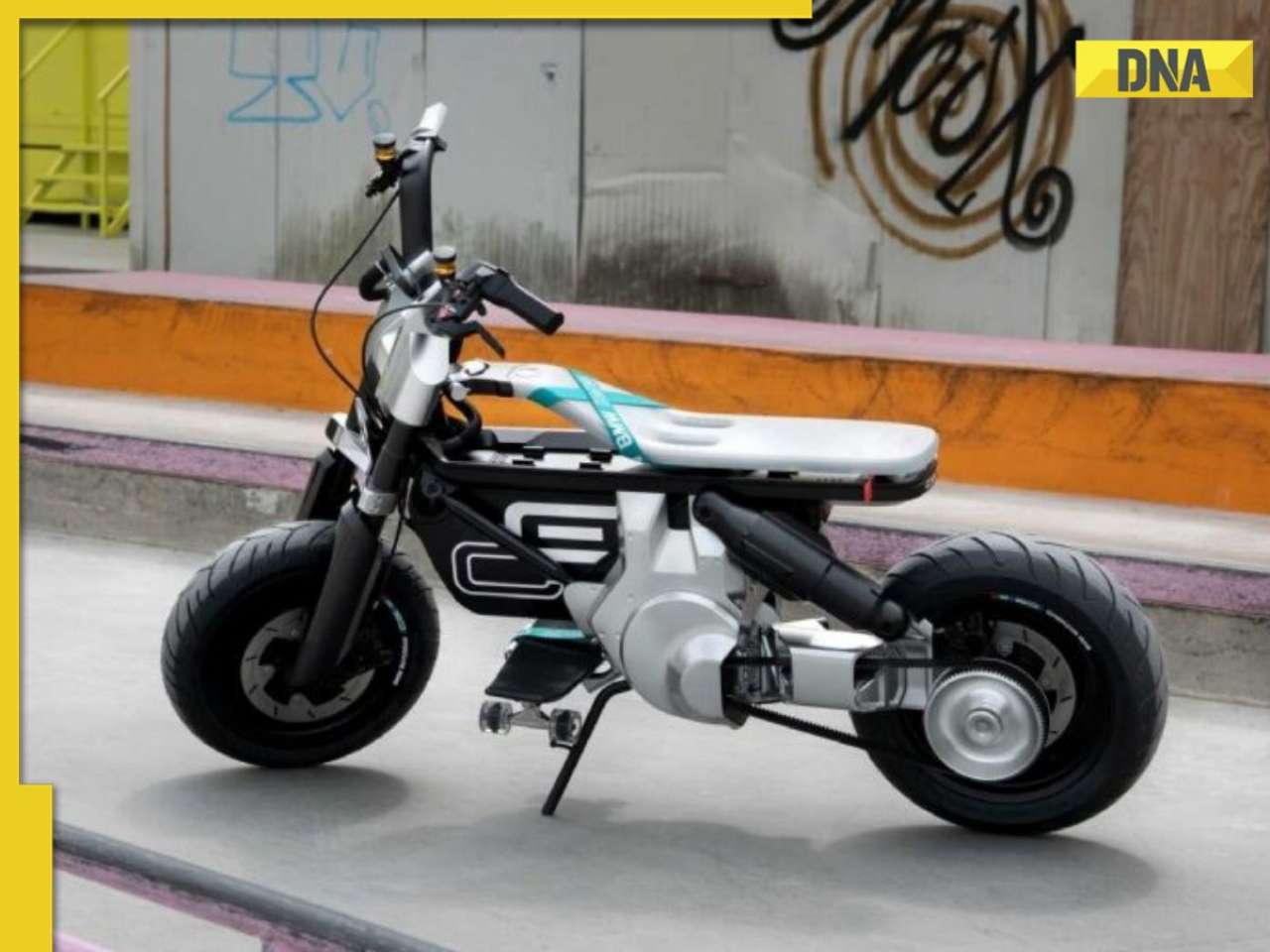A cluster of tiny, low-cost unmanned aerial vehicles collaborates to collect intelligence at low altitudes.
In one of the greatest displays of autonomous artificially intelligent technology, the U.S. Department Of Defense released a video that demonstrates its latest Perdix drones as they flew in unison in China Lake, California.
According to DoD, the test -- which were originally conducted in October 2016 -- comprised of 103 Perdix drones launched onboard a trio of the department's F/A-18 Super Hornet fighter aircrafts.
The swam-like autonomous system was first created in 2013 by engineering students from the AeroAstro Department attached to Massachusetts Institute of Technology (MIT). In the same year, engineers from MIT Lincoln Laboratory made the drones suitable for military combat.
“This is the kind of cutting-edge innovation that will keep us a step ahead of our adversaries. This demonstration will advance our development of autonomous systems,” said Secretary of Defense Ash Carter.
Given its sheer size, controlling each drone by a single individual is impossible. The system, therefore, relies on commands which the fleet of drones can jointly perform. The system also autonomously relays information, so if a drone falls down it is replaced by another. The drone weighs about a third of a kilogram and measures about a 30-centimetre. The micro-drones can also exhibit collective decision-making, adaptive formation flying, and self-healing.
Despite the impressive demonstration, the system is currently being further enhanced by DoD with joint efforts from the Strategic Capabilities Office and the Naval Air Systems Command.
“Due to the complex nature of combat, Perdix are not pre-programmed synchronized individuals, they are a collective organism, sharing one distributed brain for decision-making and adapting to each other like swarms in nature,” said William Roper, the U.S. SCO Director. “Because every Perdix communicates and collaborates with every other Perdix, the swarm has no leader and can gracefully adapt to drones entering or exiting the team.”
DoD is looking to partner with companies to mass produce the drones: about 1000 at a time. The Perdix drones can be used for a multitude of purposes including reconnaissance and combat mission. Its is no doubt that such an autonomous system will change military warfare.
![submenu-img]() Meet actress, Dilip Kumar, Amitabh's heroine who slapped Sanjeev Kumar, filed case against her mom, is related to...
Meet actress, Dilip Kumar, Amitabh's heroine who slapped Sanjeev Kumar, filed case against her mom, is related to...![submenu-img]() IND vs BAN, 1st T20I Dream11 prediction: Fantasy cricket tips for India vs Bangladesh
IND vs BAN, 1st T20I Dream11 prediction: Fantasy cricket tips for India vs Bangladesh![submenu-img]() Zomato CEO Deepinder Goyal reveals he was ‘kicked out’ of Shark Tank India season 4 by…
Zomato CEO Deepinder Goyal reveals he was ‘kicked out’ of Shark Tank India season 4 by…![submenu-img]() Harsh Goenka shares three lessons for success he learnt from Mukesh Ambani, says, 'I have always...'
Harsh Goenka shares three lessons for success he learnt from Mukesh Ambani, says, 'I have always...'![submenu-img]() Nagarjuna Akkineni in trouble? Complaint filed against Telugu star over Hyderabad's Convention centre
Nagarjuna Akkineni in trouble? Complaint filed against Telugu star over Hyderabad's Convention centre![submenu-img]() India Maldives Relation: मालदीव के राष्ट्रपति मुइज्जू का भारत दौरा, क्या दूर होगी रिश्तों में कड़वाहट?
India Maldives Relation: मालदीव के राष्ट्रपति मुइज्जू का भारत दौरा, क्या दूर होगी रिश्तों में कड़वाहट?![submenu-img]() Israel Air Strike: इजरायल ने गाजा पर फिर बरपाया कहर, मस्जिद पर हमले में 18 की मौत
Israel Air Strike: इजरायल ने गाजा पर फिर बरपाया कहर, मस्जिद पर हमले में 18 की मौत![submenu-img]() जम्मू-कश्मीर: चुनावी नतीजों से पहले घाटी में बड़े हमले की साजिश, भारी मात्रा में हथियार और विस्फोटक बरामद
जम्मू-कश्मीर: चुनावी नतीजों से पहले घाटी में बड़े हमले की साजिश, भारी मात्रा में हथियार और विस्फोटक बरामद![submenu-img]() RSS प्रमुख Mohan Bhagwat की हुंकार, 'भारत एक हिंदू राष्ट्र है, हमें एकजुट होना होगा'
RSS प्रमुख Mohan Bhagwat की हुंकार, 'भारत एक हिंदू राष्ट्र है, हमें एकजुट होना होगा'![submenu-img]() UP: 'दर्द बहुत था तो 100 ग्राम पी ली', नशे में धुत पकड़े गए हेड मास्टर BDO से ये क्या बोल गए, देखें Vedio
UP: 'दर्द बहुत था तो 100 ग्राम पी ली', नशे में धुत पकड़े गए हेड मास्टर BDO से ये क्या बोल गए, देखें Vedio![submenu-img]() This company overtakes Ratan Tata's firm to become India’s…; it is owned by…
This company overtakes Ratan Tata's firm to become India’s…; it is owned by…![submenu-img]() Mahindra Thar ROXX booking to start from..., check waiting period, details
Mahindra Thar ROXX booking to start from..., check waiting period, details![submenu-img]() BMW launches CE 02 electric scooter in India; price starts at Rs…
BMW launches CE 02 electric scooter in India; price starts at Rs…![submenu-img]() Mahindra Thar Roxx 4x4 prices revealed, starts at Rs…
Mahindra Thar Roxx 4x4 prices revealed, starts at Rs…![submenu-img]() Sebi gives nod to Hyundai India's Rs 20,000 crore IPO, listing month is...
Sebi gives nod to Hyundai India's Rs 20,000 crore IPO, listing month is...![submenu-img]() Meet woman, who failed in four UPSC prelims, missed interview, got panic attack, then finally became...
Meet woman, who failed in four UPSC prelims, missed interview, got panic attack, then finally became...![submenu-img]() Meet IIT graduate, who didn't settle for IPS posting, cracked UPSC exam twice to become...
Meet IIT graduate, who didn't settle for IPS posting, cracked UPSC exam twice to become...![submenu-img]() Meet IIT-JEE topper with 355 marks in JEE Advanced, whose father works at Mukesh Ambani's Reliance Jio, aims to join..
Meet IIT-JEE topper with 355 marks in JEE Advanced, whose father works at Mukesh Ambani's Reliance Jio, aims to join..![submenu-img]() Meet woman who begged in childhood, became doctor after 20 years of struggle, now she is...
Meet woman who begged in childhood, became doctor after 20 years of struggle, now she is...![submenu-img]() Meet man, who left govt job as Assistant Excise Officer, used to get Rs 50000000, now works as...
Meet man, who left govt job as Assistant Excise Officer, used to get Rs 50000000, now works as...![submenu-img]() After Hassan Nasrallah's Death, This Cleric Is Now Tipped To Be Hezbollah Leader | Israel | Lebanon
After Hassan Nasrallah's Death, This Cleric Is Now Tipped To Be Hezbollah Leader | Israel | Lebanon![submenu-img]() Hashem Safieddine, Cousin Of Hassan Nasrallah To Become Hezbollah's New Chief | Israel-Lebanon War
Hashem Safieddine, Cousin Of Hassan Nasrallah To Become Hezbollah's New Chief | Israel-Lebanon War![submenu-img]() Israel Hezbollah War: Nasrallah's Death, A Turning Point for Hezbollah's Future? Experts Explain
Israel Hezbollah War: Nasrallah's Death, A Turning Point for Hezbollah's Future? Experts Explain![submenu-img]() Israel Hezbollah War: Hassan Nasrallah's Death Leads To Protests In J&K, Ex-CM Mehbooba Mufti Reacts
Israel Hezbollah War: Hassan Nasrallah's Death Leads To Protests In J&K, Ex-CM Mehbooba Mufti Reacts![submenu-img]() Israel Hezbollah War: Nasrallah's Death Leads To Protest By Women & Children In Jammu And Kashmir
Israel Hezbollah War: Nasrallah's Death Leads To Protest By Women & Children In Jammu And Kashmir![submenu-img]() BIG boost for Mukesh Ambani's Jio Financial Services, to challenge ICICI, SBI bank as his company gets SEBI nod for...
BIG boost for Mukesh Ambani's Jio Financial Services, to challenge ICICI, SBI bank as his company gets SEBI nod for...![submenu-img]() Anil Ambani-led company's total debt stands at Rs 40413 crore but...
Anil Ambani-led company's total debt stands at Rs 40413 crore but...![submenu-img]() These siblings overtake Gautam Adani in billionaires list, combined net worth more than Elon Musk, they are…
These siblings overtake Gautam Adani in billionaires list, combined net worth more than Elon Musk, they are…![submenu-img]() Meet wife of famous Indian cricketer, who cracked CS exam, now earns crores by selling cakes, her net worth is...
Meet wife of famous Indian cricketer, who cracked CS exam, now earns crores by selling cakes, her net worth is...![submenu-img]() Success story in every spray: How Toxic Male Perfume captured India's heart and market
Success story in every spray: How Toxic Male Perfume captured India's heart and market![submenu-img]() 10 Aabha Paul photos and videos that rule Instagram
10 Aabha Paul photos and videos that rule Instagram![submenu-img]() India’s most expensive cars and their owners
India’s most expensive cars and their owners![submenu-img]() Who is IIT professor Chetan Solanki aka 'Solar Gandhi'who went viral for his torn socks?
Who is IIT professor Chetan Solanki aka 'Solar Gandhi'who went viral for his torn socks?![submenu-img]() Bigg Boss 18: Step into cave-hotel themed BB house with 107 cameras, luxurious bathroom, scary jail, spacious bedroom
Bigg Boss 18: Step into cave-hotel themed BB house with 107 cameras, luxurious bathroom, scary jail, spacious bedroom![submenu-img]() All about Anupama Parameswaran, who played simpleton in debut film, became famous for bold scenes, dated..
All about Anupama Parameswaran, who played simpleton in debut film, became famous for bold scenes, dated..![submenu-img]() J-K Elections 2024: Exit polls give edge to Congress-NC alliance, BJP likely to win…
J-K Elections 2024: Exit polls give edge to Congress-NC alliance, BJP likely to win…![submenu-img]() Haryana Exit Poll Results 2024: Pollsters predict major win for Congress, setback for BJP
Haryana Exit Poll Results 2024: Pollsters predict major win for Congress, setback for BJP![submenu-img]() Former cricketer and actor Salil Ankola's mother found dead, police say injury...
Former cricketer and actor Salil Ankola's mother found dead, police say injury...![submenu-img]() NCRTC kicks off trial runs of Namo Bharat trains on Sahibabad-New Ashok Nagar route: Check speed, timings and distance
NCRTC kicks off trial runs of Namo Bharat trains on Sahibabad-New Ashok Nagar route: Check speed, timings and distance![submenu-img]() 'Gave up arms, adopted Gandhian way of...': Separatist Yasin Malik in court
'Gave up arms, adopted Gandhian way of...': Separatist Yasin Malik in court














































)
)
)
)
)
)
)
)
)
)
)
)
)
)
)





)
)
)
)
)
)